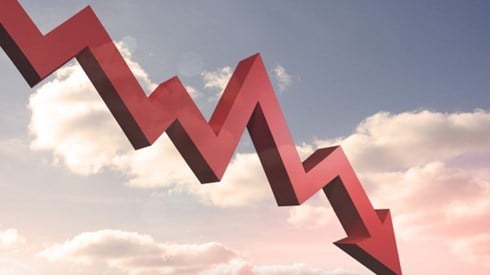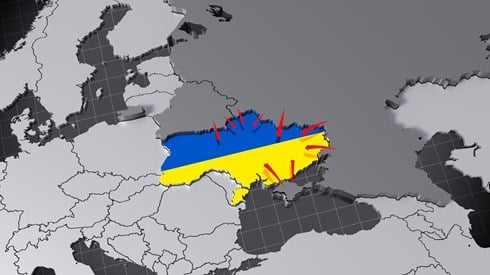Uncertainty Aside, Global Reinsurance Sector's Outlook Remains Stable

December 05, 2022

Despite uncertain market conditions and such negative factors as rising natural catastrophe losses and ongoing inflation, A.M. Best has maintained its stable outlook for the global reinsurance sector.
"Despite most drivers not being seen in isolation, overall a number of positive factors are counterbalanced by negative ones," Best says in its November 30, 2022, Best's Market Segment Report titled "Market Segment Outlook: Global Reinsurance."
According to the rating agency, the primary negative forces confronting reinsurers included the heightened natural catastrophe activity that has tested investors' risk tolerance. The impact of the natural catastrophes is heightened by geopolitical and economic uncertainty, Best says.
Other negatives include the cautious entry of new capital into the market, despite improved prices and tighter terms and conditions, Best says. Also, while the reinsurance segment is well capitalized, interest rate hikes and volatile investment markets have reduced shareholders' equity, according to Best. And inflation and the risk of a recession increase the challenge of setting profit targets.
There are a number of positive factors influencing the global reinsurance business, however. Among them, reinsurers continue to see positive pricing momentum and enhanced market discipline, including tighter terms and conditions, Best says. In addition, demand for reinsurance capacity continues to grow, as primary insurers look to stabilize results and achieve capital efficiency in an uncertain environment.
Another positive for the sector is that some major reinsurers are beginning to stabilize their results by reducing their property catastrophe exposures or by diversifying their mix of business, Best says.
The Best report notes that negative pressures on reinsurers' results in recent years have been the result of not only traditional natural catastrophes but also the growth of secondary perils such as pandemic and the Ukraine-Russia conflict. A climate of financial, economic, social, and geopolitical uncertainty has contributed further to those pressures.
"Although the segment remains well-capitalized, the instability of financial results and inability of most players to meet their cost of capital has tested investors' risk tolerance," Best says. "This has been more evident in the (insurance-linked securities) markets, including retro, which, owing to severe losses and trapped capital issues, has been unable to expand or re-load in recent years and continues to experience a significant flight to quality when allocating capital."
According to the Best report, anticipated rate increases started to attract new capital to the reinsurance sector in 2019, based on the expectation that natural catastrophe activity would revert to historic levels. Hurricane Ian, expected to be one of the costliest insured losses in recent history, upset those expectations, however, Best says.
"But even without major catastrophic events, the accumulation of small to medium-sized events has had a material impact on claims ratios, sometimes at unexpected times of year (e.g., Winter Storm Uri in Texas) or outside their usual geographical scope (e.g., Hurricane Ida), affecting areas as far north as Canada," the Best report says.
In addition, extremely unusual events such as systemic floods in Western Europe are occurring, Best says, as well as a worldwide increase in the frequency and severity of wildfires and floods.
"The perception of volatility and uncertainty has been magnified for reinsurers, on the asset and liability side of the balance sheet as well as on the bottom line," the Best report says. "Investors may not feel as comfortable as they did before these issues emerged—and this is even truer for catastrophe risks, which were traditionally considered high severity, low frequency."
Over the past 5 years, however, the frequency component of those catastrophe risks appears to have risen to a point that investors are reassessing their positions and return expectations, Best says.
While in theory there should be a price level high enough to offset that uncertainty, most reinsurers feel they have yet to reach that point, the report says. Meanwhile, Hurricane Ian is likely to increase the upward momentum of reinsurance price increases at January renewals.
Reinsurers prefer stable results over the potential for larger but volatile profit margins, according to Best. Some reinsurers have been taking steps to reduce their property catastrophe exposures or even exiting the market altogether, though some do see the current environment as an opportunity to improve profit margins and consolidate market positions.
While, in general, reinsurers—particularly property catastrophe writers—have trailed primary insurers and retro writers in increasing rates, rates have been on the rise since 2018 and the rate of increases for property catastrophe reinsurance appears to be accelerating, Best says.
The report notes that Guy Carpenter has calculated a 15 percent increase in its US Property Catastrophe Rate-on-Line index between January and July of this year. "Such an increase has not been seen since 2006 and is leading to speculation that the end-of-year renewals may witness a 'true' hardening that eventually turns the corner for reinsurers," Best says. "The recent losses from Hurricane Ian may strengthen those expectations."
Property catastrophe reinsurance prices are likely to continue to see a significant increase into the coming year, Best says, with increased demand from primary insurers reflecting the effects of inflation and higher insured values.
At the same time, rate increases for casualty and specialty lines reinsurance have slowed, Best says, with margins remaining attractive given recent claims experience. "Due to attractive pricing conditions, interest for cyber risks remains strong but is still typically accompanied by cautious growth and strict control of cover limits," the report says.
The Best report suggests that the global reinsurance segment remains well capitalized. Still, reinsurers remain cautious in deploying capital as they look to protect balance sheets against market fluctuations and position themselves to deploy resources prudently when opportunities do arise.
December 05, 2022










